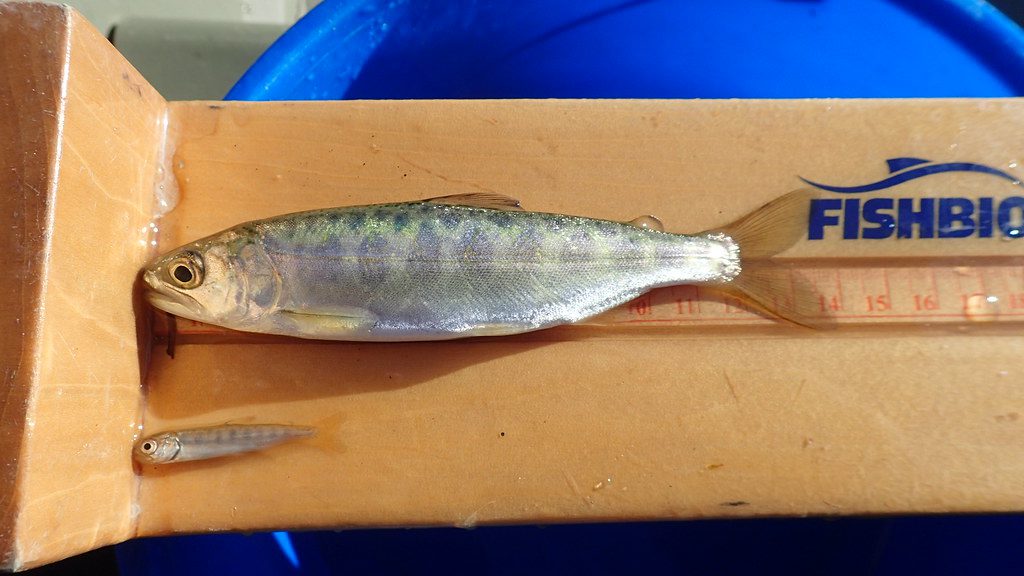Monday December 28, 2020

To round out 2020, here’s a look back at our most popular stories of the year. It’s a mix of FISHBIO standards: salmonids, smelt, and the science of estimating fish population size. Enjoy!
#5: One Fish, Two Fish – Using Mark-Recapture to Estimate Population Size
For anyone who has ever caught a tagged fish and wondered why scientists go around sticking them with bits of brightly colored plastic, this article explains the process and theory behind a mark and recapture study. It even includes a custom infographic to illustrate how such a study works – consider this your introduction to Fish Population Biology 101!
#4: Don’t be Salty: Operating the Suisun Marsh Tidal Gates to Benefit Delta Smelt
This story describes a novel approach to manage a highly modified habitat, the Sacramento-San Joaquin Delta, to help a highly imperiled species, the delta smelt. Operating the salinity control gates at Suisun Marsh to create less salty habitat appears to have benefits for delta smelt – a bit of hopeful news for a fish that sorely needs it.
#3: Recovering Lost Leviathans: Pyramid Lake Lahontan Cutthroat
Another happy fish tale is one of the greatest comeback stories of the West: the restoration of the magnificent Lahontan cutthroat trout to Pyramid Lake, Nevada. Success of this recovery was evidenced in the recent return of Lahontan cutthroats to spawn in the Truckee River for the first time since the 1930s.
#2: Stream to Sea and Back Again: Modeling the Fall-Run Chinook Salmon Life Cycle
We never tire of learning about the remarkable life cycle of fall-run Chinook salmon, so we were pleased to discover our readers feel the same way! This story describes a recently developed scientific model that provided insights into salmon survival, and highlighted the importance of marine predation, egg mortality based on water temperature, and freshwater flow during juvenile outmigration in rivers.
#1: Crystal Compass: Chinook May Rely on Magnetic Minerals to Navigate
Topping our list this year was a story investigating one of the great mysteries of salmon biology: the mechanics of migration. A recent study provided evidence that salmon’s ability to navigate with the help of the Earth’s magnetic field may be the result of magnetite crystals in their bodies. Their sense of direction is certainly admirable during a year when many of us felt at sea!
Thank you for reading along with us this year, and we look forward to bringing you new and interesting stories in 2021!
This post featured in our weekly e-newsletter, the Fish Report. You can subscribe to the Fish Report here.
